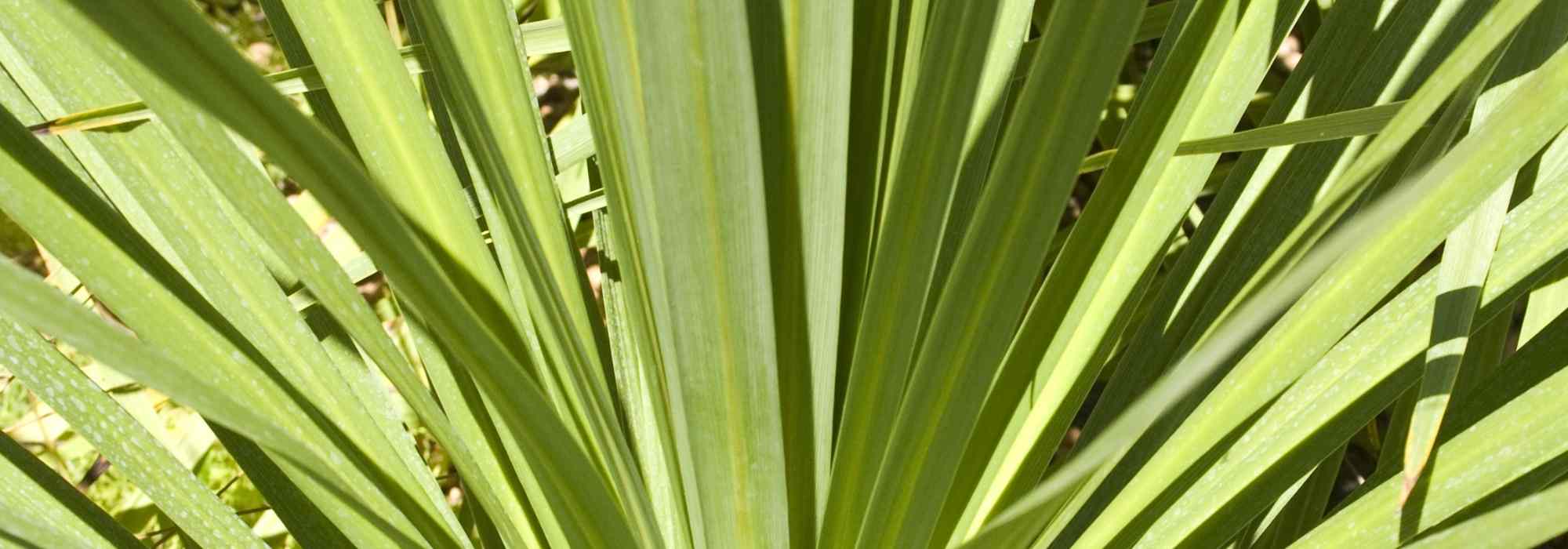
Choosing a cordyline
Our tips to make the right choice
Contents
With its slender palm-like appearance, Cordyline or cabbage palm is a beautiful perennial plant with a bushy habit, highly valued for its graphic and exotic silhouette. Its decorative and evergreen foliage embodies all the charm of the antipodes and resembles that of yuccas, but is more flexible. It remains attractive all year round. There are many varieties with either solid or variegated foliage, derived from the widely cultivated Cordyline australis, such as Cordyline australis ‘Red Star’.
Native to the warm and dry climates of New Zealand and the Pacific, Cordyline is a frost-sensitive exotic that is easy to grow in our regions with mild winters. Elsewhere, it should be grown in a large pot to be brought indoors during the colder season.
To assist you, here are our tips for choosing your Cordyline based on the colour of its foliage, your region, its height, or its intended use.
According to the colour of the foliage
Cordylines feature truly remarkable decorative and evergreen foliage. It consists of sword-shaped, pointed, slightly arched leaves measuring between 30 and 90 cm in length. Depending on the varieties, this foliage varies in colour, ranging from pale green to almost fluorescent pink. The cultivars are distinguished by their stunning colours and variegated patterns revealed in numerous parallel veins.
Solid-Foliage Cordylines
More subdued and fewer in number than the multicoloured cultivars, solid-foliage cordylines are nonetheless interesting. They integrate well into a simple or very contemporary decor.
- Cordyline australis features tufted foliage of glaucous green.
- The ‘Superstar’ variety (‘Albatross’ PBR) stands out with particularly wide and glossy leaves, remarkably coloured in dark purple-red.
- The Cordyline australis ‘Red Star’ displays long, tapered, arched leaves of deep purple-red.
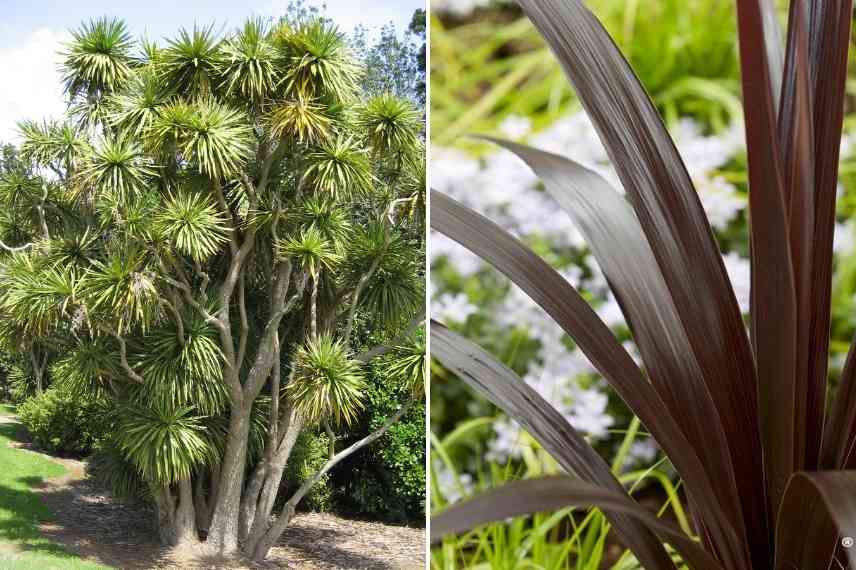
Cordyline australis and Cordyline ‘Superstar’
Variegated-Foliage Cordylines
Varieties with variegated foliage are the most common. With their bright and vibrant colours, they provide a spectacle all year round. They feature numerous parallel veins and are richly coloured. They possess a very exotic and magnificent appearance!
- The Cordyline australis ‘Pink Passion’ has long, slightly arched leaves, violet in the centre and margined with bright, almost fuchsia pink.
- The Cordyline australis ‘Torbay Dazzler’ boasts very long leaves striated with cream yellow and very bright green.
- The Cordyline australis ‘Cherry Sensation’ is a unique variety with its original foliage, cherry red to pink, striated with almost bronze olive green.
- The Cordyline x banksii ‘Electric Pink®’ is characterised by its purple-brown foliage, widely margined with bright, almost fluorescent pink.
- The Cordyline ‘Can Can’ offers unprecedented colour variations, creating tones of fluorescent pink, white to cream, mixed with different shades of green. A spectacular kaleidoscope!
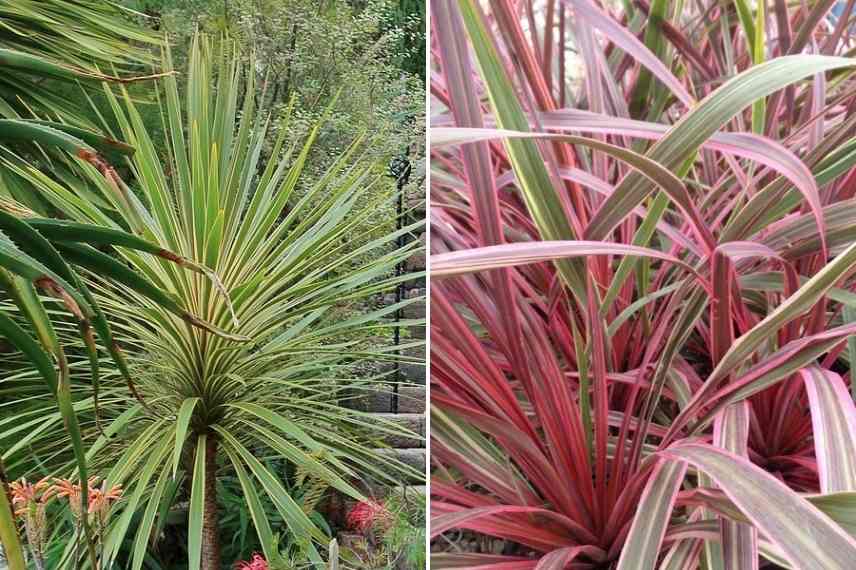
Cordyline ‘Torbay Dazzler’ (© Cultivar 423) and Cordyline ‘Can Can’
Read also
Cordyline : to plant, to grow, to careAccording to its hardiness
Cordylines are all semi-hardy, making them quite sensitive to cold. This is why they are grown differently from one region to another. The hardiest can withstand short frosts of around -8/-10°C. These are easy to grow in the ground in gardens that are sheltered from severe cold; Mediterranean or Atlantic climates suit them perfectly. To improve their hardiness in the garden, do not hesitate to plant them out of the cold north winds, in well-drained soil, and generously mulch their base with a layer of fallen leaves before the cold sets in. Elsewhere, they can be grown in a large pot to adorn the veranda during the colder season.
The hardiest cordylines
Cordyline is a plant suited to warm climates. However, some are a bit less sensitive to cold than others:
- Cordyline australis or Australasian Cordyline can withstand temperatures down to -8°C.
- The Cordyline australis ‘Charly Boy’ is particularly interesting for its resistance to damp cold. It will survive short frosts of around -10°C once well established.
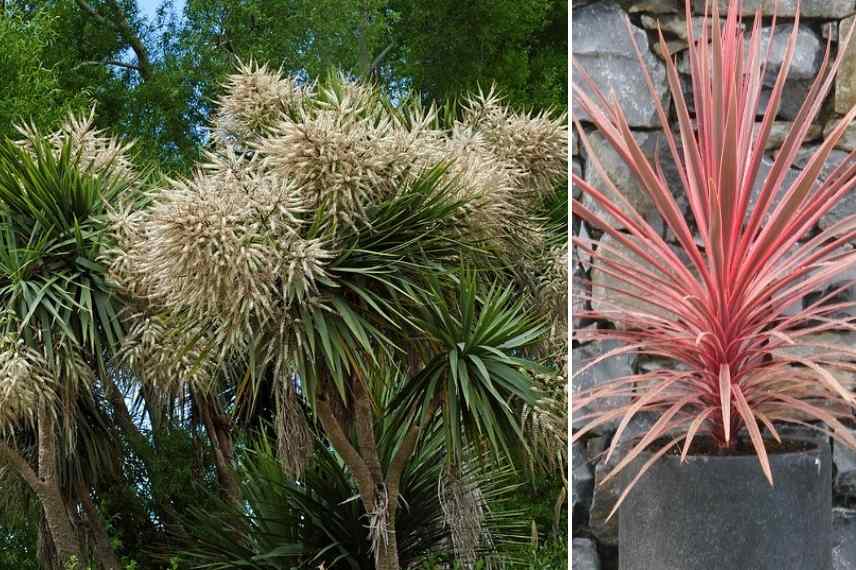
Cordyline australis and Cordyline ‘Charlie Boy’
The most sensitive varieties
Most cultivars with purple or variegated foliage, such as ‘Pink Passion’ or ‘Southern Splendour’, are even more sensitive to frost and direct sunlight that can scorch their leaves. Hardy down to -5°C, their cultivation in the ground is best reserved for mild climates, ideally coastal gardens. In regions with harsh winters, they should be grown in a large pot and brought indoors before the first frosts to a greenhouse or a lightly heated veranda.
⇒To learn more, discover our tips on “Overwintering Cordyline” and Which Cordyline to plant according to your region?
Discover other Cordyline
View all →Available in 1 sizes
Available in 1 sizes
Available in 1 sizes
Available in 1 sizes
Available in 3 sizes
Available in 1 sizes
Available in 2 sizes
Available in 1 sizes
Available in 2 sizes
Available in 1 sizes
According to its size and shape
Cordyline is a plant that has an upright palm-like and bushy habit. It develops in a leafy rosette during its early years, and in most cases, eventually forms a single trunk, more or less short, topped with numerous branches bearing leaves as it matures.
With or without a trunk
Some, like Cordyline x banksii ‘Electric Star®’ form a bush without a trunk, making it resemble a phormium.
Variable size
The size varies from one specimen to another. While in its natural habitat, cordyline can reach 20 m in height, in our gardens, the largest specimens will not exceed 6 to 10 m in height with a spread of 4 m after years of cultivation. Some varieties have a more modest stature, not exceeding 1.50 m in all directions. It should be noted that plants grown in pots, limited by their containers, maintain dimensions reduced by half compared to those in open ground.
The largest cordylines
Large-growing Cordylines are spectacular for dressing large spaces! They will look wonderful at the centre of a large exotic bed, as a specimen tree, or even as a windbreak in a coastal garden. Next to Cordyline australis, which will slowly reach 5 to 6 m in height in our seaside gardens, with a spread of 2 m, some varieties are equally remarkable in a garden. This is the case with Cordyline australis ‘Red Star’, which has a beautiful spread of 3.50 to 4 m in height at maturity and up to 1.50 to 2 m in width. However, it grows more slowly than the type. ‘Sunrise’ is also distinguished by a beautiful size, as it will slowly reach 2 to 3 m in height, with a spread of 1 m.
Medium-sized cordylines
Reaching 1.50 to 2 m in height, they allow for the creation of original and very colourful scenes, structuring large sunny slopes or even in partial shade or the centre of exotic beds. Like the ‘Peko’ variety, they easily find their place in exotic compositions associated with other plants that have the same cultural requirements. They make a statement when isolated in a temperate garden.
Small varieties
Many selections, such as Cordyline ‘Can Can’, offer reduced proportions. More compact, they are particularly suited for pot cultivation and will always make a lovely impact on a terrace or balcony. They also integrate easily into a small bed or a rockery with an exotic or contemporary spirit.
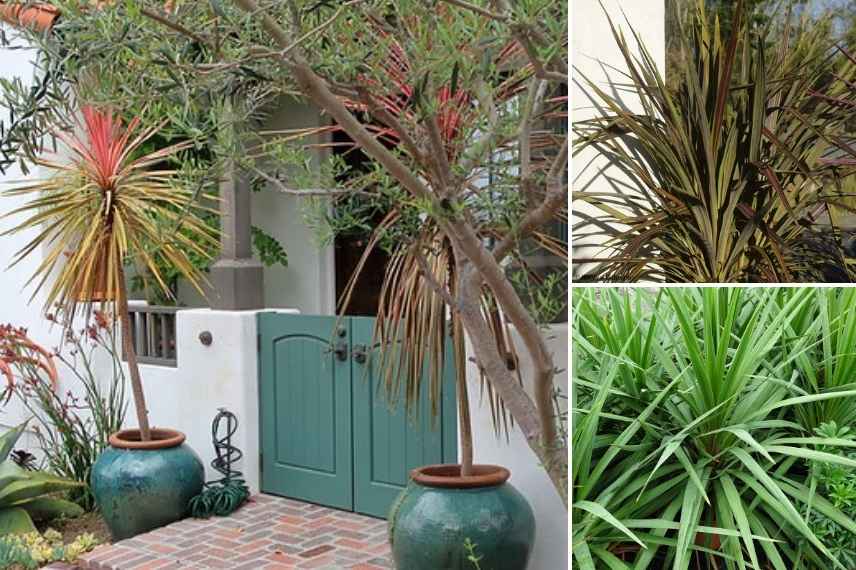
Cordyline australis in a pot (© KM), Cordyline banksii ‘Electric Star’ and Cordyline ‘Peko’
Read also
Combining CordylineAccording to its use
All cordylines are easy to grow in pots as well as in the ground.
- In the heart of a large bed, as a street tree, as a windbreak, or as a solitary specimen, it is the largest varieties that should be favoured, such as ‘Torbay Dazzler’ or the species type.
- In pots or small gardens, choose miniature cultivars that barely exceed 1 m in height and 80 cm in width when mature, or opt for the more tender species if you live in an area with harsh winters: in pots, they will maintain a reduced growth.
→ Learn more about growing Cordyline in pots in our article.
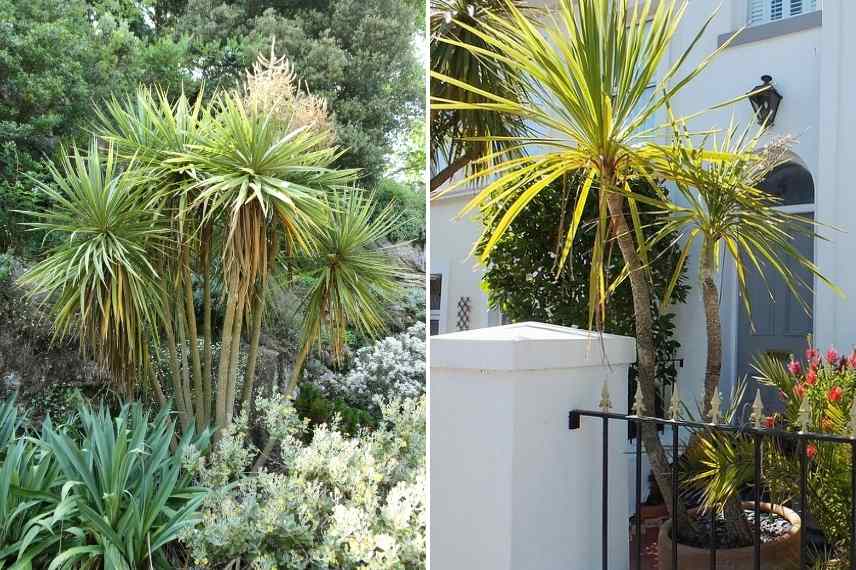
A stunning Cordyline planted in a bed, and a Cordyline remaining more modest in size planted in a pot (© Torquay Palms)
- Subscribe!
- Contents
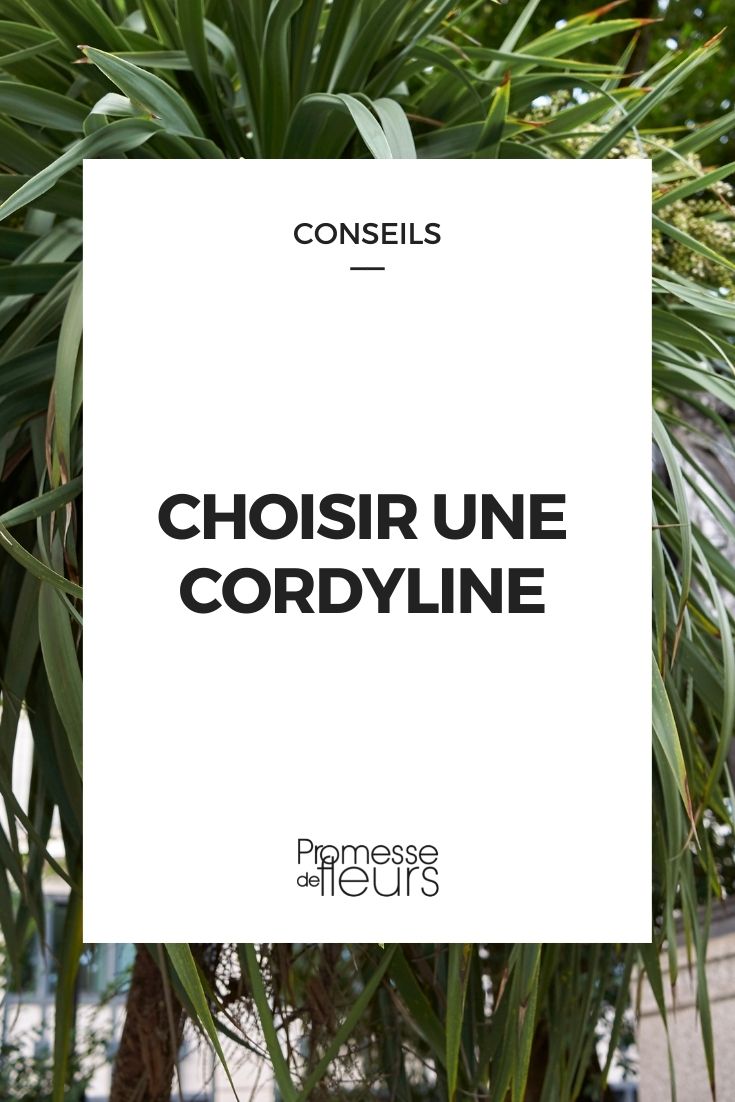































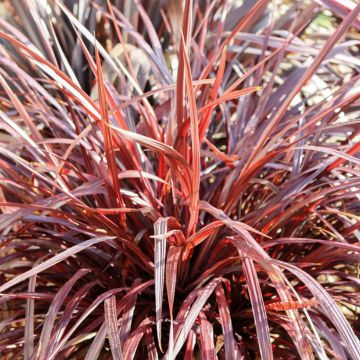
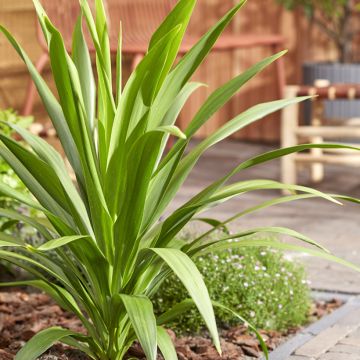
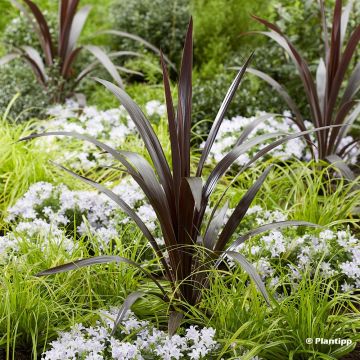
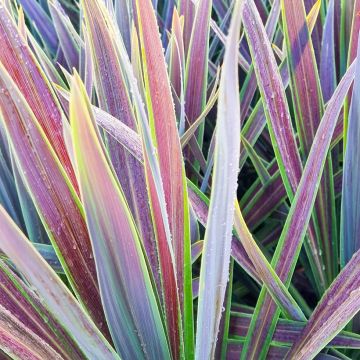
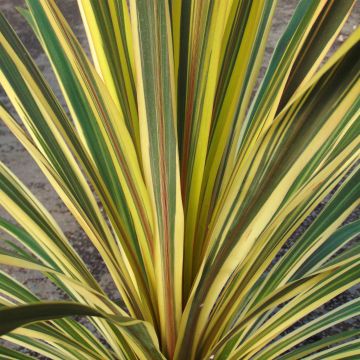
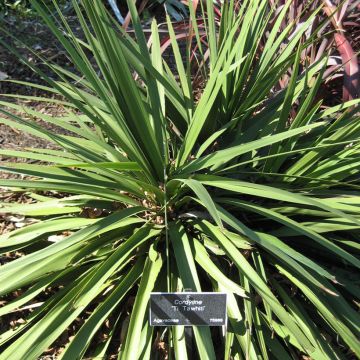
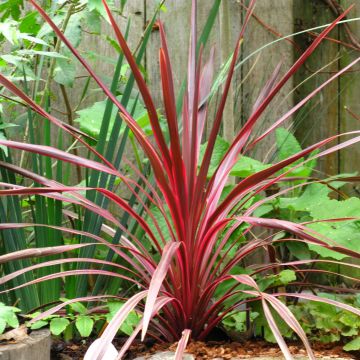
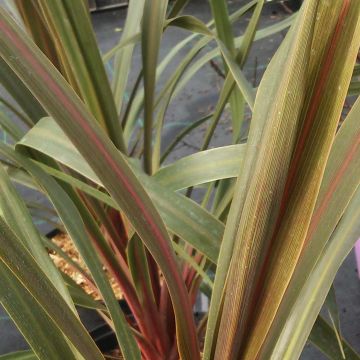
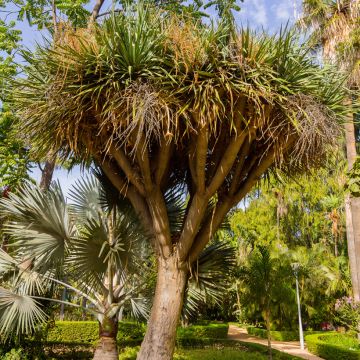
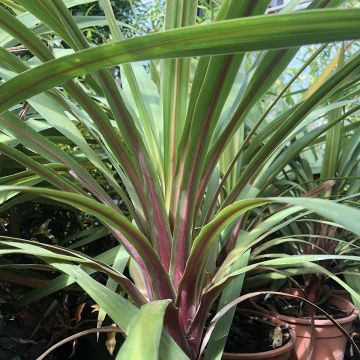
Comments